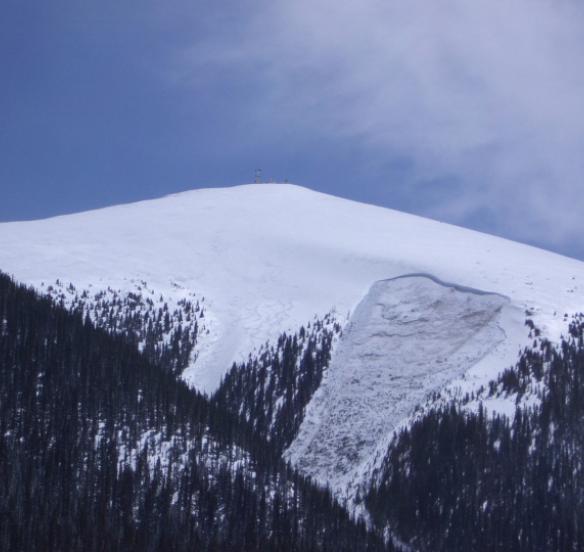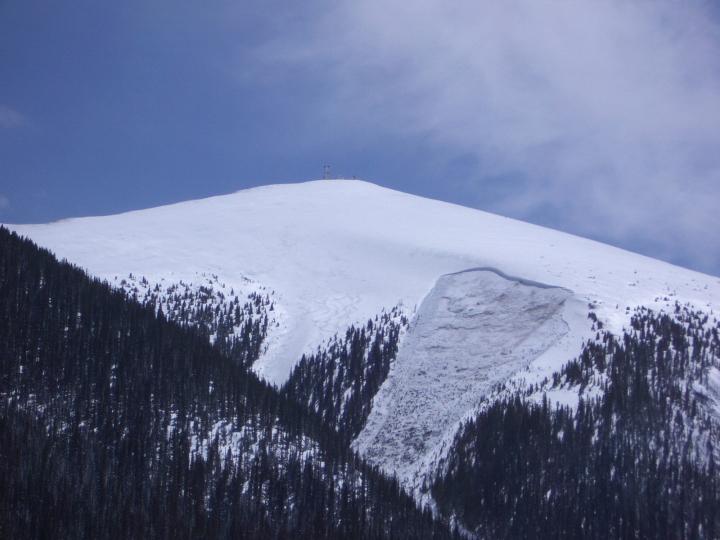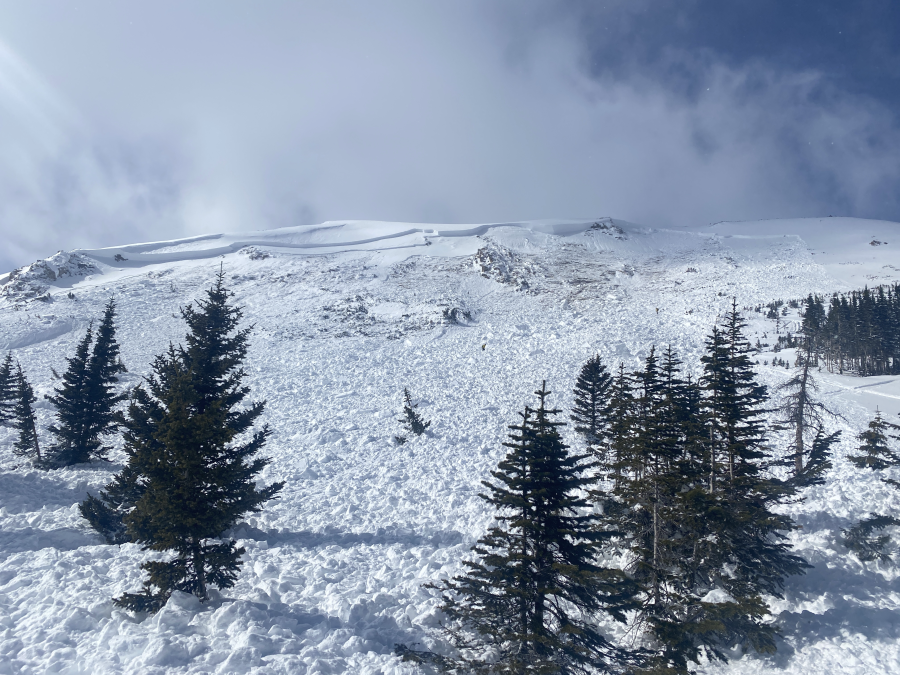Deep Persistent Slab
Release of a thick cohesive layer of hard snow (a slab), when the bond breaks between the slab and an underlying persistent weak layer, deep in the snowpack or near the ground. The most common persistent weak layers involved in deep, persistent slabs are depth hoar or facets surrounding a deeply buried crust. Deep Persistent Slabs are typically hard to trigger, are very destructive and dangerous due to the large mass of snow involved, and can persist for months once developed. They are often triggered from areas where the snow is shallow and weak, and are particularly difficult to forecast for and manage. They commonly develop when Persistent Slabs become more deeply buried over time.
Deep Persistent Slabs are destructive and deadly events that can take months to stabilize. You can trigger them from well down in the avalanche path, and after dozens of tracks have crossed the slope. Avalanche Essentials–Deep Persistent Slab
How they form
Deep Persistent Slabs form when a persistent weak layer is deeply buried under a thick hard slab of snow created by numerous storm events. This problem commonly develops when an early season persistent weak layer like depth hoar or crust-facet combinations become more deeply buried over time.
Where they are
The spatial distribution of Deep Persistent Slabs (like Persistent Slabs) is dictated by the distribution of the thick slabs and the culprit weak layer. The slab and weak layer distribution are dictated by the weather patterns responsible for their creation. Thus, Deep Persistent Slab distribution can range from widespread across terrain to specific terrain features, but are confined to areas with a deep snowpack. They can occur at all elevations and on all aspects, and can be triggered on low-angle to steep slopes. Consult the backcountry avalanche forecast to determine where in the terrain this problem exists.
Timing
Deep Persistent Slabs can be a problem during any time of the snowy season but the most common period is mid-winter through spring since it takes some time to develop a thick slab via multiple snow events. The problem takes weeks to months to develop, and can then persist for weeks or months.
Recognition
Unfortunately, there is often little direct evidence of a Deep Persistent Slab problem until a large destructive avalanche releases. The lack of avalanche activity even with dozens of tracks on a slope does not indicate the absence of a Deep Persistent Slab problem. Observing deeply buried weak layers in snow profiles, and gauging sensitivity with appropriate deep layer snowpack tests like Deep Tap Tests and Propagation Saw Tests can be helpful in assessing the presence of this problem.
Treatment and Avoidance
Deep Persistent Slabs are very difficult to predict and manage. They are low-probability high-consequence events. If you are caught in one, you are unlikely to survive. Often the only evidence of the problem arrives too late as a large, deadly, and unexpected avalanche. The only real effective risk management strategy is to avoid areas where you suspect a Deep Persistent Slab. They are most commonly triggered from shallow spots in the snowpack. Avoiding these areas is one way to reduce risk. Give yourself a wide safety buffer to handle the uncertainty, potentially for the remainder of the season.






